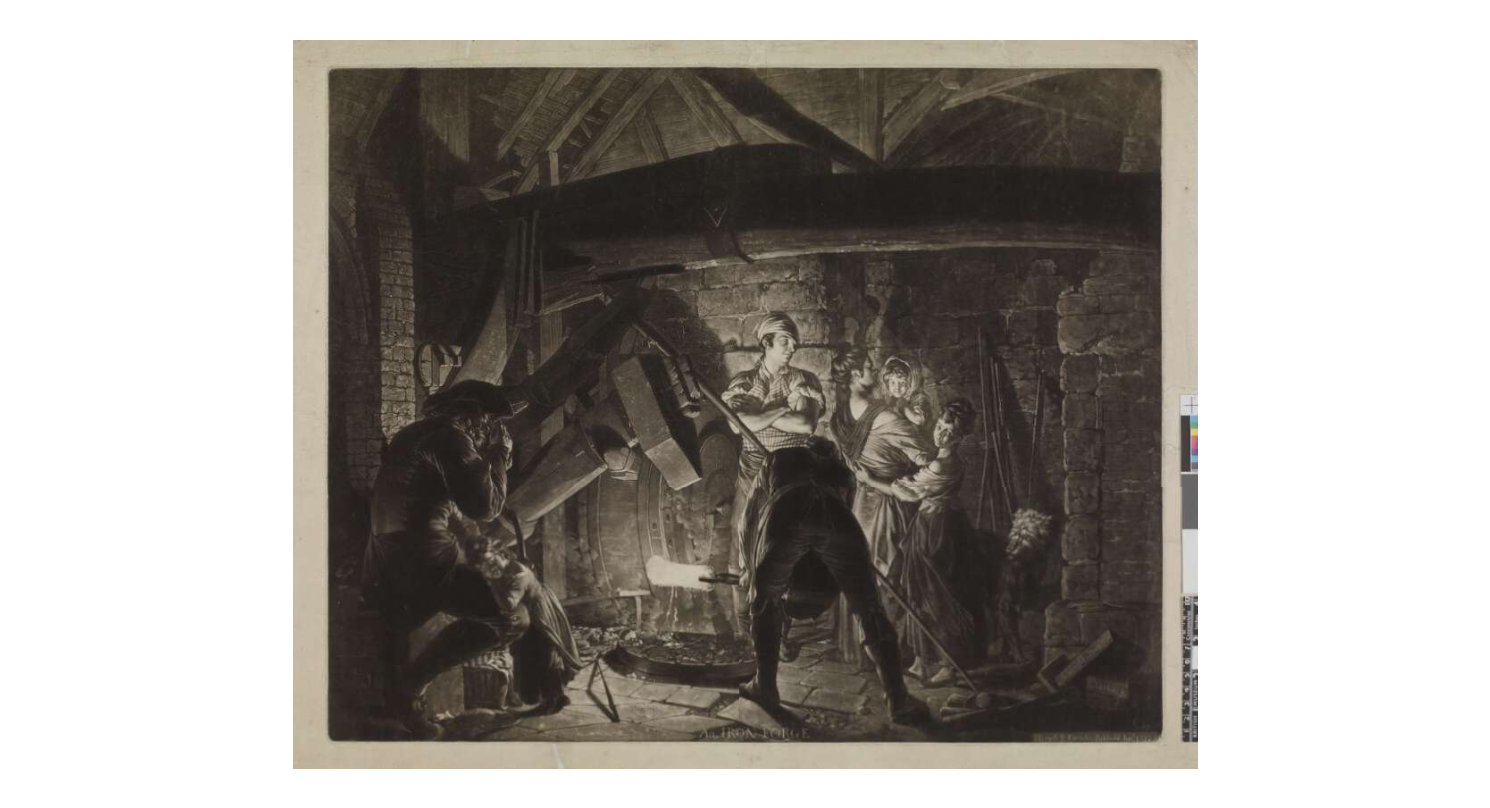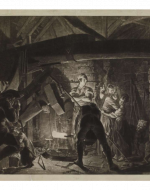Created by Christopher Montanari on Wed, 12/01/2021 - 13:25
Description:
Joseph Wright’s “An Iron Forge” (1772), is a vivid and technically intricate painting depicting a blacksmith working on iron in a forge surrounded by his family. Produced at the advent of the romantic artistic movement, shortly after industrialization had begun to make its mark on the world, the painting offers a novel picturesque representation of the merging of artistic and industrial processes. Its exalting presentation of the life of the labourer was unique for its time, and the result is the creation of new understandings into the matter of these evolutionary processes. Wright’s decision to represent the scene of the common labourer liberates the sublime from boundaries imposed by social structures. The vibrant glow of the iron in the painting that illuminates the rest of the scene shifts the perspective of what it means to experience the sublime. By situating its source in people, Wright deconstructs notions of the sublime within traditional artistic practices and philosophical inquiry. This new approach to knowledge is amplified in the reproduction of the painting itself, aided by the mechanical process of mezzotint printing. Through mechanical reproduction, the viewing of the piece is liberated from the control of wealth, freeing the experience to those outside the social upper-class. The result is a work that exalts the labour of common people, situates the sublime in ever-shifting perspectives, and challenges traditional notions of the sublime sources of art.
Copyright:
Associated Place(s)
Part of Group:
Featured in Exhibit:
Artist:
- Joseph Wright of Derby



